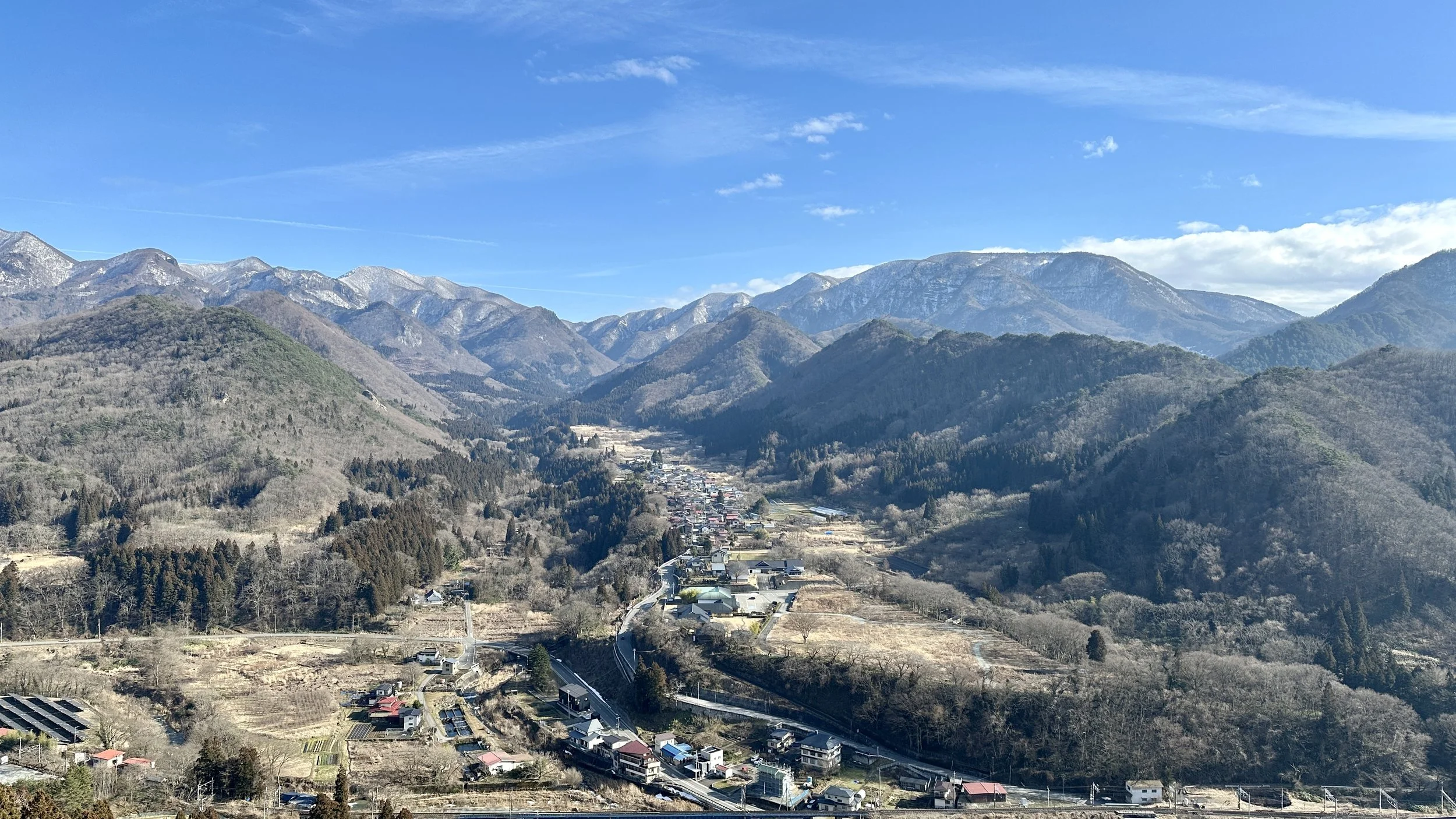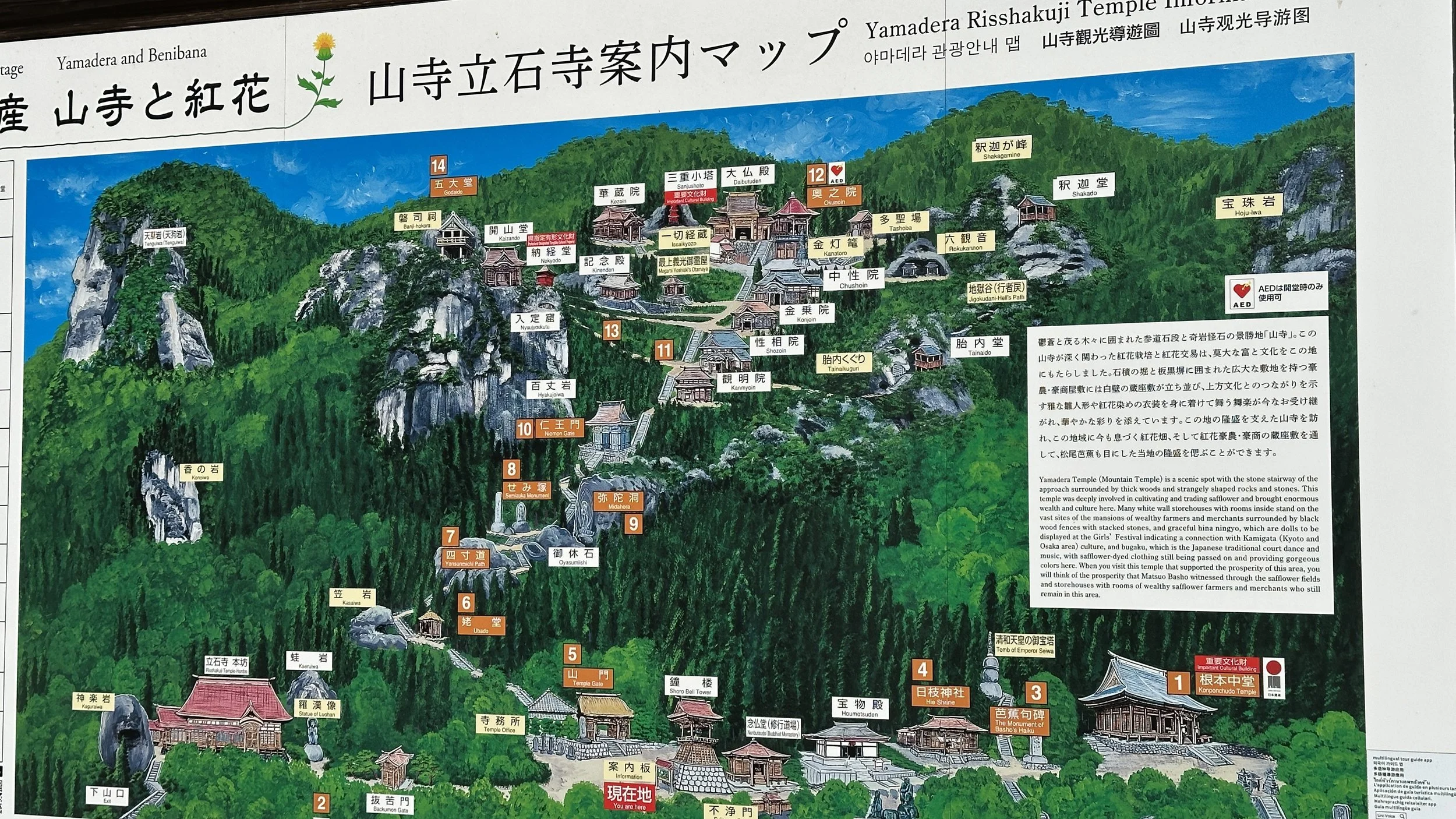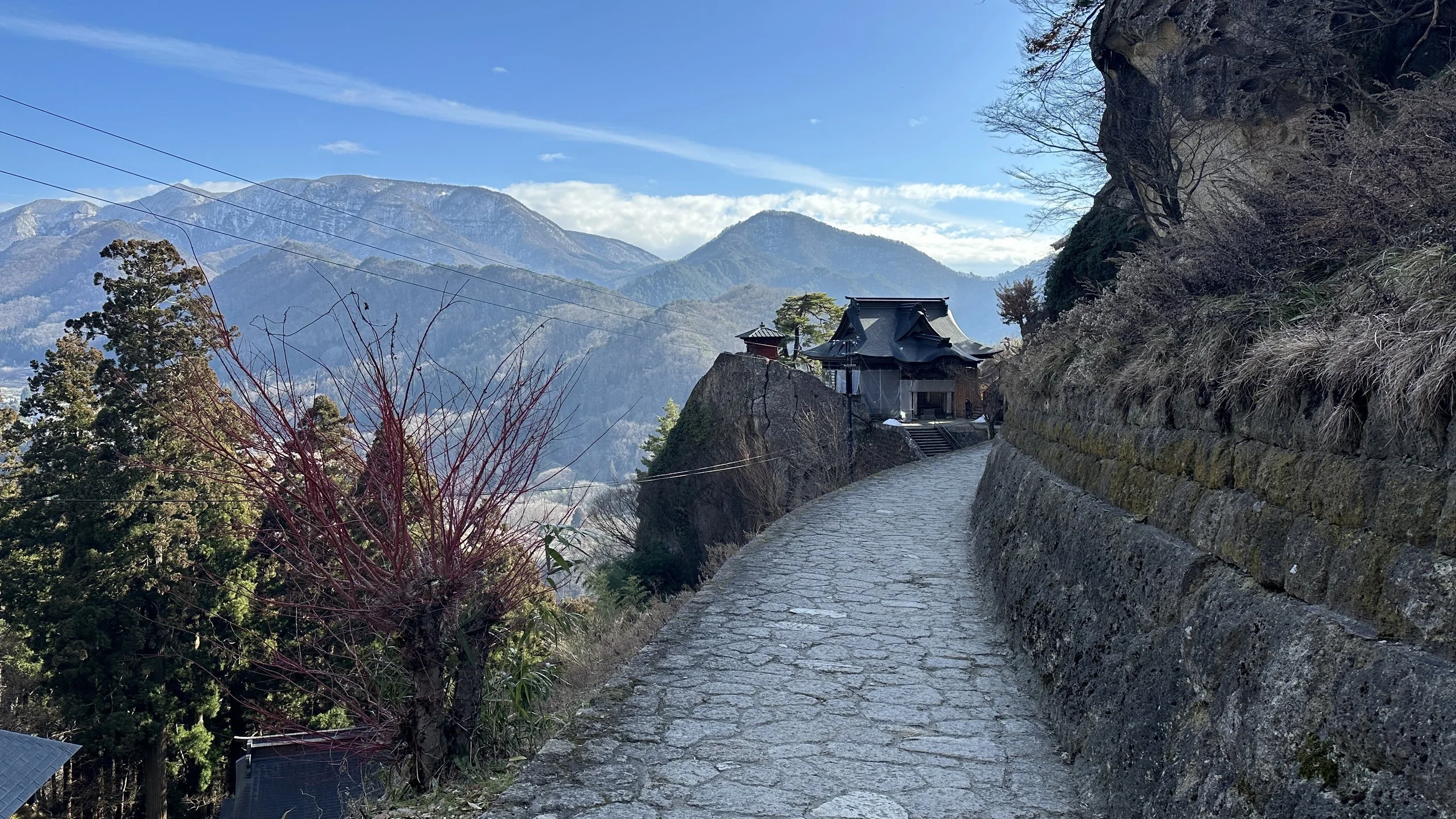Yamadera Temple Japan Travel Guide
Have your eyes set on visiting one of Japan’s best temples? Head to Yamadera (山寺). Yamadera is the perfect day trip from either Sendai or Yamagata City. Located in the Tohoku region, northeast of Yamagata city. The Temple is situated along a mountainside and has some of Japan’s best views.
Founded around 860, over 1,000 years ago, in the early Heinan Period, the temple has been an important landmark in the surrounding region, for locals as well as present-day tourism.
View from Yamadera Temple
When to visit Yamadera
Yamadera is open all year round, even on national holidays. However, I recommend visiting in either spring /sakura season or autumn, as the summer months (June to early September) can be quite humid, while the winters can be bitterly cold, especially if the temple is covered in snow. However, Winter does have the possibilities for some amazing photos and the least amount of crowds.
If you are aiming to beat the crowds, visit on a weekday, preferably Tuesdays or Thursdays, and visit later in the day.
Costs and Fees:
¥500 (Upper Area), ¥200 (store House)
Opening times:
8:00 - 16:00 (April - November)
8:30 - 15:00 (December to March)
Getting To Yamadera
Yamadera is easily accessible via train from either Sendai or Yamagata City, with trains departing in either direction every hour. There is a mix of Local and Rapid trains; however, both stop in Yamadera on their way to Sendai or Yamagata city.
Visiting from Tokyo? Yamadera as a day trip from Tokoyo is definitely possible; however, expect an early morning, you can catch the Shinkansen from one of Tokyo’s stations and head directly to Sendai or Yamagata, then change to the Senzan line, which runs between Yamagata City and Sendai while stopping in Yamadera. Luggage lockers are available at the stations.
Fares from either station are:
From Sendai: ¥858 (roughly 1hr 10 min)
From Yamagata: ¥242 (roughly 17 min)
You are able to use your IC card (Suica, Pasmo, etc).
Map of the temple complex
What to Expect
Yamadera is a large complex of smaller individual temples and monuments, all with their own meaning and focus. Many of them are small, and some are large and are home to the caretakers of the complex. One of the first buildings you see will be the Konponchudo Hall, which is the main hall for the complex and is worth a visit.
Entry to the 1,015 steps starts at the Sanmon Gate, where the entrance fee must be paid. The stairway to the top will take around 30 minutes to complete. At the end, you are rewarded with an amazing view over the valley.
At the top is one of the most famous buildings, Kaisando Hall, which was dedicated to the founder, and the smaller Nokyodo building. A few more steps past the hall is Godaido Hall, offering some of the most amazing views over the valley and will probably be the main reason for your visit.
I recommend you spend at least 2 hours exploring the complex. There is so much to see and admire.
Nearby Attractions and Dining
Keen to learn more about Yamadera, head to Basho Memorial Museum, located close to the train station. The museum focuses on Basho and his trip through northern Japan.
If you also have time, spend a couple of hours in either Sendai or Yamagata city, both have their own charms and relevance and are often overlooked by most tourists. If you are visiting in Winter, I recommend a stop at Zao Quasi National Park; it’s the perfect escape for anyone interested in skiing or a love of hiking.
The town has a couple of dining options as well as small stores selling souvenirs and local favourites. Here are a couple of recommendations:
Enzou - Highly rated regional food with a highlight on Soba.
Maidoya Shokudo - Picturesque restaurant along the riverside.
Entry to the Basho museum is: ¥400 and is open from 9:00 - 16:30
View over the Valley and Nokyodo building
Final Thoughts
If you are looking for a slower-paced Japan trip or want to connect with nature more, Yamadera should definitely be at the top of your ‘must-see’ list. It’s the perfect escape from the bustle of Japanese cities and is a great option to connect back with nature and explore Japanese spirituality.
If you have the time in your trip, I would highly recommend a visit, even if it’s a day trip from Tokyo, it’s part of Japan, which is still ‘undiscovered’




